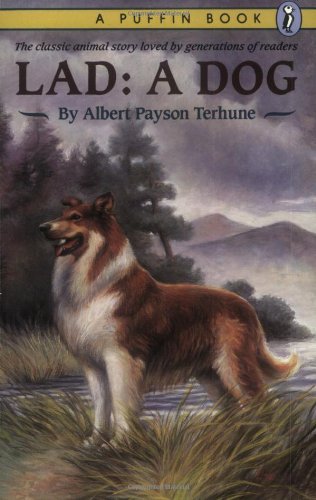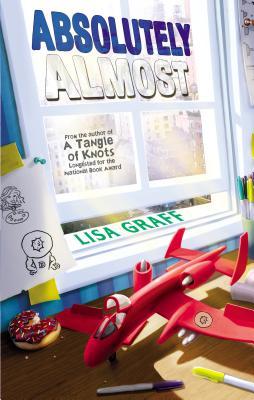In 2019 Booklist published their list of the “50 Best Middle Grade Novels of the 21st Century.” Go ahead, take a look.
They left off Harry Potter, Wimpy Kid, and Percy Jackson because they figured those already had enough attention. (I would leave off two of the three for reasons of poor quality and over-exposure, and HP for the reason they state.) They also “cheated” and included series as one book, so I plan to do the same. Anyway, I do have some reading background and expertise in this particular genre, and for your reading pleasure I thought I would give you my own list of the 50 Best Middle Grade Novels of the 21st Century (so far). There is some overlap between my list and Booklist’s list, so I’ll start with those books we agree on.
Booklist and Semicolon’s Best Books (14 selections):
The Girl Who Drank the Moon by Kelly Barnhill. Algonquin, 2016.
Greenglass House by Kate Milford. Illus. by Jaime Zollars. Clarion, 2014.
Last Day on Mars by Kevin Emerson. HarperCollins/Walden Pond, 2017.
Lockwood & Co. series by Jonathan Stroud. Illus. by Kate Adams. Disney/Hyperion, 2012-2017. (5 titles)
The Mysterious Benedict Society series by Trenton Lee Stewart. Illus. by Carson Ellis and Diana Sudyka. Little, Brown/Megan Tingley, 2007-2012. (4 titles)
Okay for Now by Gary D. Schmidt. Clarion, 2011.
The Penderwicks series by Jeanne Birdsall. Knopf, 2005-2018. (5 titles)
Race to the Bottom of the Sea by Lindsay Eagar. Candlewick, 2017.
Rain Reign by Ann M. Martin. Feiwel and Friends, 2014.
The Ranger’s Apprentice series by John Flanagan. I’ve only read the first book in this series, but I do plan to read more. Recommended.
A Single Shard by Linda Sue Park. Clarion, 2001. Newbery Award winning story of an orphan boy who wants to become a potter. Tree-Ear, named for a wild mushroom that grows without seed, lives under a bridge with his friend and mentor, Crane-man. His friend’s shriveled and twisted leg and foot makes him unable to work, and the two manage to eat and hold body and soul together by foraging among the garbage heaps. Then, Tree-Ear gets a job—and a dream of leaving the fringes of 12th century Korean society to become an artisan.
The Tale of Despereaux: Being the Story of a Mouse, a Princess, Some Soup, and a Spool of Thread by Kate DiCamillo. Illus. by Timothy Basil Ering. Candlewick, 2003.
When You Reach Me by Rebecca Stead. Random/Wendy Lamb, 2009.
Where the Mountain Meets the Moon series by Grace Lin. Little, Brown, 2009-2016. (3 titles)
Then, Betsy Bird at Fuse #8 chimed in with the substitutions and changes she would make to the list.
Fuse #8 and Semicolon’s Best Books (3 selections):
Rules by Cynthia Lord.
A Drowned Maiden’s Hair by Laura Amy Schlitz. Historical fiction about Maud, an orphan, who is adopted out-of-the-blue by two elderly sisters. Her new guardians lavish her with new clothes on their way home to their large home, but then make her hide in the attic when guests come. They have a plan for Maud to help them in their spiritualism business, but Maud may be more than the sister bargained for.
Ghost by Jason Reynolds.
And, these are my selections—33 more books that I think are outstanding and will stand the test of time:
Heart of a Shepherd by Roseanne Parry.
Cosmic by Frank Cottrell Boyce.
The Wingfeather Saga by Andrew Peterson. (On the Edge of the Dark Sea of Darkness, North! Or Be Eaten, The Monster in the Hollows, The Warden and the Wolf King) Waterbrook/Rabbit Room Press, 2008-2014.
The London Eye Mystery by Siobhan Dowd. 2008.
The Underneath by Kathi Appelt.
Alvin Ho series by Lenore Look.
The Casson Family series by Hilary McKay. (Saffy’s Angel, Indigo’s Star, Permanent Rose, Caddie Ever After, Forever Rose) Margaret K. McElderry Books, 2002-2008.
Maggie Valley novels by Kerry Madden. (Gentle’s Holler, Louisiana’s Song, Jessie’s Mountain)
Leepike Ridge by N.D. Wilson. Random House, 2007.
A Long Walk to Water by Linda Sue Park.
Sweep: The Story of a Girl and Her Monster by Jonathan Auxier.
The Hero’s Guide to Storming the Castle by Christopher Healy.
Boys Without Names by Kashmira Sheth. Eager to find work after his hungry family arrives in Mumbai, 11-year-old Gopal ends up locked in a one-room “factory” making beaded frames with five other boys so beaten down they don’t even talk to one another. The boys have no names because their boss manipulates them to distrust one another in the interest of keeping them in slavery. Heart-rending, but never preachy, and ultimately hopeful.
Bamboo People by Mitali Perkins. Charlesbridge, 2010.
Anything But Typical by Nora Leigh Baskin.
A Crooked Kind of Perfect by Linda Urban.
Clementine books by Sara Pennypacker.
Hattie Big Sky by Kirby Larson.
Books of Bayern by Shannon Hale. (The Goose Girl, Enna Burning, etc.)
Because of Winn-Dixie by Kate DiCamillo.
The Crossover by Kwame Alexander.
The Rise and Fall of Mount Majestic by Jennifer Trafton.
The False Prince by Jennifer A. Nielsen. The Ascendance Trilogy.
The Luck Uglies series by Paul Durham.
Tuesdays at the Castle series by Jessica Day George.
War Horse by Michael Morpurgo.
Chasing Vermeer series by Blue Balliet.
The Thief series by Megan Whalen Turner.
Circus Mirandus by Cassie Beasley.
Isle of Swords by Thomas Wayne Batson.
Turtle in Paradise by Jennifer L. Holm.
Any Which Wall by Laurel Snyder.
Framed by Frank Cottrell Boyce.
So, what do you think? What books would you add or take away from my list or Booklist‘s list? Or make your own list, and link in the comments.
 I have a weakness for stories about quirky children, especially autistic or Asperger’s children. I absolutely loved Rain Reign, the story of Rose, whose name is a homonym, who loves homonyms, and who loves her dog, Rain, whose name is also a homonym.
I have a weakness for stories about quirky children, especially autistic or Asperger’s children. I absolutely loved Rain Reign, the story of Rose, whose name is a homonym, who loves homonyms, and who loves her dog, Rain, whose name is also a homonym.





